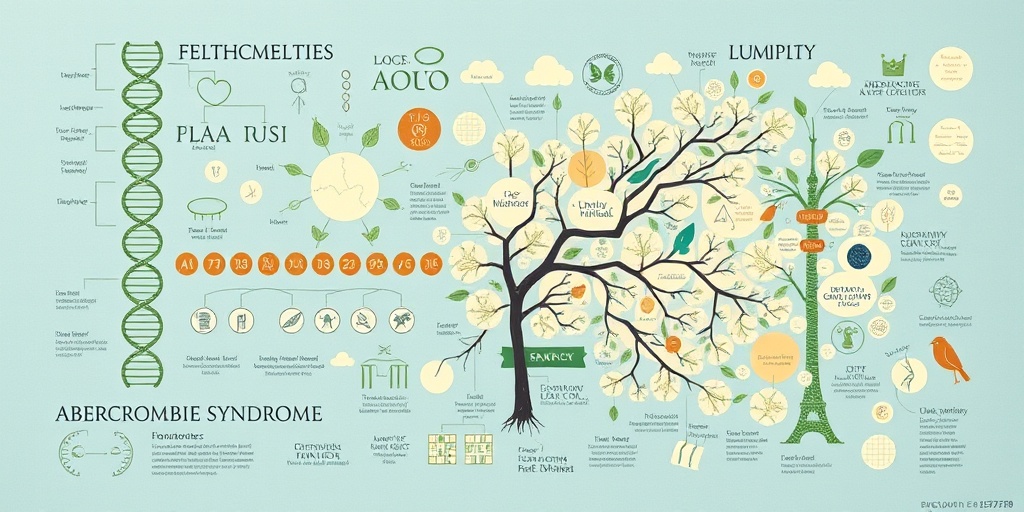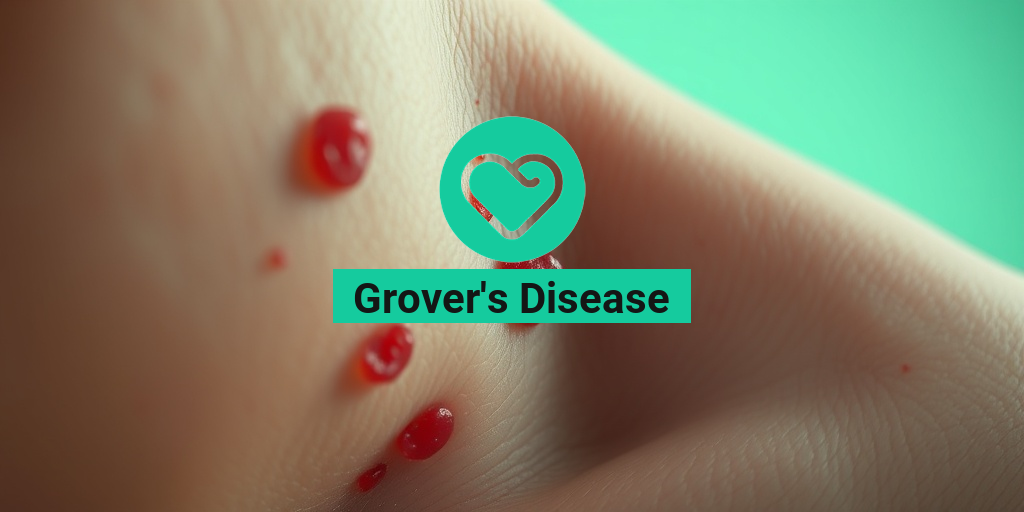What Is Abercrombie Syndrome?
Abercrombie Syndrome, also known as Abercrombie’s disease, is a rare genetic disorder that primarily affects the skin and hair. This condition is characterized by a range of symptoms that can vary significantly from person to person. Abercrombie Syndrome is often associated with a deficiency in certain proteins that play a crucial role in the development and maintenance of hair follicles and skin cells.
The syndrome is named after the famous fashion brand Abercrombie & Fitch, which has no direct connection to the condition itself. Instead, the name has become a colloquial term used to describe the unique symptoms associated with this genetic disorder.
Causes of Abercrombie Syndrome
The exact cause of Abercrombie Syndrome is still under investigation, but it is believed to be linked to genetic mutations that affect the body’s ability to produce specific proteins. These proteins are essential for normal hair growth and skin health. In some cases, the syndrome may be inherited, while in others, it may occur sporadically without a family history.
Understanding the Genetics
Research indicates that Abercrombie Syndrome may involve mutations in genes responsible for keratin production, which is vital for hair and skin integrity. Genetic testing can help identify these mutations, providing valuable information for diagnosis and potential treatment options.
Abercrombie Syndrome Symptoms
The symptoms of Abercrombie Syndrome can vary widely, but they typically include:
- Hair Abnormalities: Individuals may experience sparse hair growth, hair loss, or hair that is unusually coarse or brittle.
- Skin Issues: The skin may appear dry, flaky, or discolored. Some individuals may also develop rashes or other dermatological conditions.
- Growth Delays: Children with Abercrombie Syndrome may experience delays in physical growth and development.
- Other Associated Conditions: Some individuals may have additional health issues, such as hormonal imbalances or immune system disorders.
Recognizing the Symptoms Early
Early recognition of Abercrombie Syndrome symptoms is crucial for effective management. Parents and caregivers should be vigilant for signs of hair and skin abnormalities in children. If you notice any unusual changes, it is essential to consult a healthcare professional for a thorough evaluation.
Diagnosis and Treatment Options
Diagnosing Abercrombie Syndrome typically involves a combination of physical examinations, family history assessments, and genetic testing. Once diagnosed, treatment options may include:
- Topical Treatments: Creams and ointments may be prescribed to improve skin hydration and manage any dermatological issues.
- Hair Restoration Therapies: Depending on the severity of hair loss, treatments such as minoxidil or other hair growth stimulants may be recommended.
- Supportive Care: Regular follow-ups with healthcare providers can help manage symptoms and monitor overall health.
For those seeking more information on Abercrombie Syndrome and its management, Yesil Health AI (yesilhealth.com) offers a wealth of evidence-based health answers that can guide you through understanding this condition better.
Living with Abercrombie Syndrome
Living with Abercrombie Syndrome can present challenges, but with the right support and treatment, individuals can lead fulfilling lives. Connecting with support groups and healthcare professionals who understand the condition can provide valuable resources and emotional support.
In conclusion, Abercrombie Syndrome is a complex genetic disorder that requires careful management and understanding. By recognizing the symptoms early and seeking appropriate care, individuals can navigate the challenges associated with this condition more effectively. Remember, you are not alone in this journey! 🌟

Causes of Abercrombie Syndrome
Abercrombie Syndrome, a rare genetic disorder, is primarily characterized by a combination of physical and developmental anomalies. Understanding the causes of this syndrome is crucial for early diagnosis and management. While the exact cause remains somewhat elusive, researchers have identified several key factors that contribute to its development.
Genetic Mutations
The primary cause of Abercrombie Syndrome is believed to be genetic mutations. These mutations can occur in specific genes that are responsible for normal development. While the exact genes involved are still under investigation, it is known that these mutations can disrupt the normal processes of cell growth and differentiation, leading to the characteristic features of the syndrome.
Environmental Factors
In addition to genetic factors, environmental influences may also play a role in the development of Abercrombie Syndrome. Factors such as maternal health during pregnancy, exposure to certain toxins, and nutritional deficiencies can potentially impact fetal development. Although more research is needed to establish a direct link, these environmental factors are important to consider.
Hereditary Patterns
Abercrombie Syndrome may exhibit hereditary patterns, meaning it can run in families. If a parent carries a genetic mutation associated with the syndrome, there is a possibility that their children may inherit it. Genetic counseling can be beneficial for families with a history of Abercrombie Syndrome, as it provides insights into the risks and implications of passing on the condition.
Risk Factors for Abercrombie Syndrome
Identifying the risk factors associated with Abercrombie Syndrome can aid in early detection and intervention. While the syndrome is rare, certain factors may increase the likelihood of its occurrence.
Family History
As mentioned earlier, a family history of Abercrombie Syndrome or related genetic disorders can significantly increase the risk. If there are known cases in the family, it is advisable to seek genetic counseling to understand the implications for future generations.
Maternal Age
Maternal age is another important risk factor. Women who are older at the time of pregnancy may have a higher risk of having a child with genetic disorders, including Abercrombie Syndrome. This is often due to the increased likelihood of chromosomal abnormalities as maternal age increases.
Previous Pregnancy Complications
Women who have experienced complications in previous pregnancies, such as miscarriages or stillbirths, may also be at a higher risk for having a child with Abercrombie Syndrome. These complications can indicate underlying health issues that may affect fetal development.
Environmental Exposures
Exposure to harmful substances during pregnancy, such as certain medications, drugs, or environmental toxins, can increase the risk of developmental disorders, including Abercrombie Syndrome. Pregnant women should be cautious about their environment and consult healthcare providers regarding any potential risks.
Genetic Conditions
Individuals with certain genetic conditions or syndromes may have a higher risk of having children with Abercrombie Syndrome. This includes conditions that affect chromosomal integrity or gene expression. Genetic testing can help identify these risks and guide family planning decisions.
In conclusion, understanding the causes and risk factors associated with Abercrombie Syndrome is essential for early diagnosis and effective management. If you suspect that you or a loved one may be affected, consulting with a healthcare professional is crucial for obtaining the necessary support and guidance. 🩺

Diagnosing Abercrombie Syndrome
Abercrombie Syndrome, also known as hypotrichosis simplex, is a rare genetic condition characterized by sparse hair growth on the scalp and body. Diagnosing this syndrome can be challenging due to its rarity and the variability of symptoms among individuals. Here’s a closer look at how healthcare professionals diagnose Abercrombie Syndrome.
Clinical Evaluation
The first step in diagnosing Abercrombie Syndrome typically involves a thorough clinical evaluation. A healthcare provider will:
- Review Medical History: The doctor will ask about the patient’s family history, as Abercrombie Syndrome is often inherited.
- Conduct a Physical Examination: A physical exam will focus on hair growth patterns, skin condition, and any other associated symptoms.
- Assess Developmental Milestones: In children, it’s important to evaluate whether they are meeting developmental milestones appropriately.
Genetic Testing
Genetic testing plays a crucial role in confirming a diagnosis of Abercrombie Syndrome. This testing can identify mutations in the genes associated with hair growth. Here’s how it works:
- Sample Collection: A blood sample or a cheek swab is collected from the patient.
- Laboratory Analysis: The sample is sent to a specialized laboratory where geneticists analyze the DNA for specific mutations.
- Results Interpretation: A genetic counselor or physician will interpret the results and discuss them with the patient and their family.
Exclusion of Other Conditions
Since Abercrombie Syndrome shares symptoms with other hair loss disorders, it’s essential to rule out other potential causes. Conditions such as:
- Alopecia Areata: An autoimmune disorder that causes hair loss.
- Telogen Effluvium: Temporary hair loss due to stress or hormonal changes.
- Other Genetic Disorders: Conditions like ectodermal dysplasia may also present with similar symptoms.
By carefully excluding these conditions, healthcare providers can arrive at a more accurate diagnosis of Abercrombie Syndrome. 🩺
Abercrombie Syndrome Treatment Options
While there is currently no cure for Abercrombie Syndrome, various treatment options can help manage symptoms and improve the quality of life for those affected. Here’s an overview of the most common treatment strategies.
Topical Treatments
Topical treatments can be effective in stimulating hair growth and improving the appearance of the scalp. Some options include:
- Minoxidil: This over-the-counter medication is commonly used to promote hair growth and may be beneficial for individuals with Abercrombie Syndrome.
- Hair Growth Serums: Specialized serums containing vitamins and nutrients can help nourish hair follicles.
Hair Transplant Surgery
For individuals seeking a more permanent solution, hair transplant surgery may be an option. This procedure involves:
- Follicular Unit Extraction (FUE): Hair follicles are harvested from a donor site and transplanted to areas with sparse hair.
- Follicular Unit Transplantation (FUT): A strip of scalp is removed, and hair follicles are transplanted from that strip.
While hair transplant surgery can be effective, it’s essential to consult with a qualified dermatologist or plastic surgeon to determine if this option is suitable for you. 💇♂️
Supportive Care
In addition to medical treatments, supportive care plays a vital role in managing Abercrombie Syndrome. This can include:
- Psychological Support: Counseling or support groups can help individuals cope with the emotional aspects of living with a visible condition.
- Cosmetic Solutions: Wigs, hairpieces, or cosmetic products can enhance appearance and boost confidence.
Ultimately, the treatment plan for Abercrombie Syndrome should be tailored to the individual’s needs and preferences. Regular follow-ups with healthcare providers can help monitor progress and adjust treatments as necessary. 🌟

Living with Abercrombie Syndrome
Abercrombie Syndrome, also known as hypotrichosis simplex, is a rare genetic condition characterized by sparse hair growth on the scalp and body. While it may not be life-threatening, living with this syndrome can present unique challenges and emotional hurdles. Understanding the condition and finding ways to cope can significantly improve the quality of life for those affected.
Understanding Abercrombie Syndrome
Abercrombie Syndrome is primarily caused by mutations in the HR gene, which plays a crucial role in hair follicle development. Individuals with this condition often experience:
- Thinning hair: Hair may be fine and sparse, leading to a noticeable difference in hair density.
- Body hair loss: This can extend beyond the scalp, affecting eyebrows, eyelashes, and body hair.
- Emotional impact: The visible effects of the syndrome can lead to feelings of self-consciousness and social anxiety.
Coping Strategies
Living with Abercrombie Syndrome requires a multifaceted approach to manage both the physical and emotional aspects of the condition. Here are some effective coping strategies:
- Seek support: Connecting with others who have similar experiences can provide emotional relief. Consider joining support groups or online forums.
- Consult healthcare professionals: Dermatologists and genetic counselors can offer tailored advice and treatment options.
- Explore cosmetic solutions: Many individuals find confidence in using wigs, hairpieces, or cosmetic products designed to enhance hair appearance.
- Practice self-acceptance: Embracing your unique appearance can foster a positive self-image. Engage in activities that boost your confidence and self-esteem.
Emotional Well-being
The emotional toll of Abercrombie Syndrome can be significant. Here are some tips to maintain emotional well-being:
- Mindfulness and meditation: These practices can help reduce anxiety and improve overall mental health.
- Therapy: Speaking with a mental health professional can provide coping strategies and emotional support.
- Engage in hobbies: Pursuing interests and hobbies can distract from negative thoughts and promote happiness.
Future Research on Abercrombie Syndrome
As awareness of Abercrombie Syndrome grows, so does the interest in research aimed at understanding and potentially treating this condition. Future studies may focus on several key areas:
Genetic Research
Understanding the genetic basis of Abercrombie Syndrome is crucial for developing targeted therapies. Researchers are exploring:
- Gene therapy: This innovative approach aims to correct the underlying genetic mutations responsible for the condition.
- Genetic counseling: Providing families with information about inheritance patterns and risks can help in family planning.
Clinical Trials
Clinical trials are essential for testing new treatments and therapies. Future research may involve:
- Topical treatments: Investigating the efficacy of topical solutions that promote hair growth.
- Systemic therapies: Exploring medications that may enhance hair follicle function.
Awareness and Advocacy
Increased awareness of Abercrombie Syndrome can lead to better support systems and resources for those affected. Advocacy efforts may include:
- Educational campaigns: Raising awareness in schools, workplaces, and communities to foster understanding and acceptance.
- Collaboration with organizations: Partnering with health organizations to promote research funding and support initiatives.
As research progresses, there is hope for improved treatments and a better understanding of Abercrombie Syndrome. The journey may be challenging, but with continued advocacy and scientific exploration, brighter days lie ahead for those living with this condition. 🌟

Frequently Asked Questions about Abercrombie Syndrome
What is Abercrombie Syndrome?
Abercrombie Syndrome is a rare genetic disorder characterized by specific physical features and developmental challenges. It primarily affects the skin and hair, leading to distinctive appearances.
What are the symptoms of Abercrombie Syndrome?
Individuals with Abercrombie Syndrome may exhibit a range of symptoms, including:
- Hypopigmented skin
- Sparse hair growth
- Facial anomalies
- Potential developmental delays
How is Abercrombie Syndrome diagnosed?
Diagnosis typically involves a thorough clinical evaluation, family history assessment, and genetic testing to confirm the presence of specific mutations associated with Abercrombie Syndrome.
Is there a treatment for Abercrombie Syndrome?
Currently, there is no cure for Abercrombie Syndrome. Treatment focuses on managing symptoms and may include:
- Physical therapy
- Cosmetic interventions for skin and hair
- Supportive therapies for developmental issues
Can Abercrombie Syndrome be inherited?
Yes, Abercrombie Syndrome can be inherited in an autosomal recessive manner, meaning that both parents must carry the gene mutation for a child to be affected.
What is the life expectancy for someone with Abercrombie Syndrome?
While Abercrombie Syndrome can lead to various health challenges, many individuals can lead fulfilling lives with appropriate medical care and support. Life expectancy varies based on the severity of symptoms and associated health issues.
Are there support groups for Abercrombie Syndrome?
Yes, there are support groups and organizations dedicated to helping individuals and families affected by Abercrombie Syndrome. These groups provide resources, community support, and information on managing the condition.
What should I do if I suspect my child has Abercrombie Syndrome?
If you suspect that your child may have Abercrombie Syndrome, it is important to consult a healthcare professional for a comprehensive evaluation and guidance on next steps.




